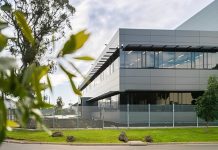
Global aerospace giant Boeing has tested its latest autonomy technology at Australia’s first commercial drone flight testing facility at Cloncurry Airport.
Boeing completed flight tests with five high performance surrogate jets operating autonomously in a team at the new flight test range in Cloncurry, which was designed and constructed by global defence technology company QinetiQ.
The Queensland Government invested $14.5 million to develop the foundation stage of the facility, which gives users access to a 20-metre by 20-metre hangar, a 2-kilometre runway, state-of-the-art monitoring equipment, surveillance radar, an air conditioned workshop and supporting amenities.
Deputy Premier and Minister for State Development, Infrastructure, Local Government and Planning Steven Miles said the construction phase of the new testing facility for unmanned aerial systems (UAS) supported more than 100 direct jobs in the region including five new apprenticeships.
“The facility is the largest of its kind in the southern hemisphere and includes a hangar, buildings for office space and monitoring equipment, range control systems, a surveillance radar and amenities,” the Minister said.
“Boeing Australia tested their advanced autonomy project including brain-on-board technology over 10 days in Cloncurry, flying up to five high performance test aircraft in a team for the first time.
“To enable instrumented testing of this calibre to occur right here in Queensland is something that makes us extremely proud.”
Director of Boeing Phantom Works International Emily Hughes said the activity was the final milestone delivered in partnership with the Queensland Government as part of the company’s Advanced Queensland Autonomous Systems Platform Technology Project.
“The tests demonstrated our success in applying artificial intelligence algorithms to ‘teach’ the aircraft’s brain to understand what is required of it,” Ms Hughes said.
“The data link capabilities enabled the aircraft to communicate with the other platforms so that they could collaborate to achieve a mission.
“The facility will provide excellent conditions to test a range of airborne test beds, which is part of an autonomy R&D program that’s heading toward new autonomous product and prototypes.”
QinetiQ Australia Managing Director Greg Barsby said the flight test range will support ‘all weight classes of UAS’ for routine flying operations, demonstration activities and test and evaluation trials.
“It will be a critical component in the overall drone ecosystem, as an enabler and connector of high-technology UAS programs and initiatives,” Mr Barsby concluded.


















